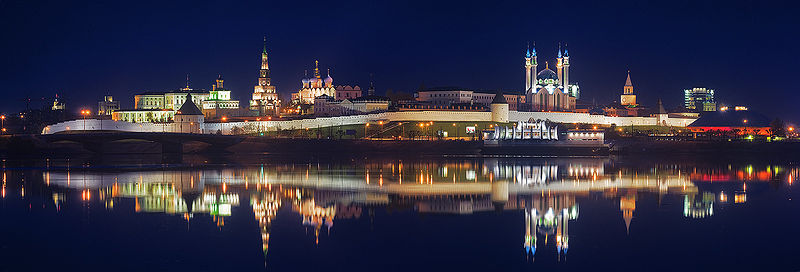
Photo Wikipedia
A fairy castle on the eastern most frontier of the Old Rus, seen from th Kazan River.
Kazan
Link to Google-Earth file Kazan.kmz
This requires that you have GE on your hard disc.
Kazan
Kreml
1552

Photo
Wikipedia
A fairy castle on the eastern most frontier of the Old Rus,
seen from th Kazan River.
Built
on an ancient site, the Kazan Kremlin dates from the Muslim period of
the Golden Horde and the Kazan Khanate. It was conquered by Ivan the
Terrible in 1552 and became the Christian See of the Volga Land. The
only surviving Tatar fortress in Russia and an important place of
pilgrimage. The Kazan Kremlin consists of an outstanding group of
historic buildings dating from the 16th to 19th centuries.
Today
Kazan is the capital of the Tartar Republic and its Kreml has the
distinction that it is the only one which includes a mosque. The
mosque was built in the 16th century. In 1552, during the conquest of
Kazan it was destroyed by Ivan The Terrible. It was rebuilt in 1996!
Annunciation
Cathedral in the Kreml
1554-62

Photo
Panoramio
Annunciation Cathedral 1554-62 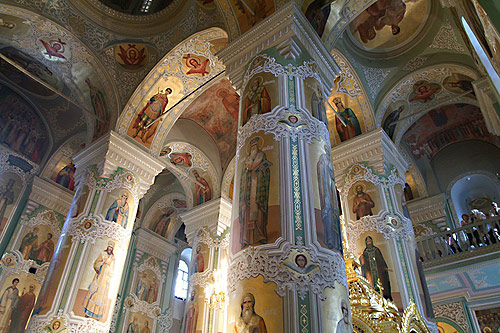
Photo
president.tartar.ru
Baroque interior of the Annunciation Cathedral 1736.
Kazan
Kreml Kul Sharif Mosque
1996
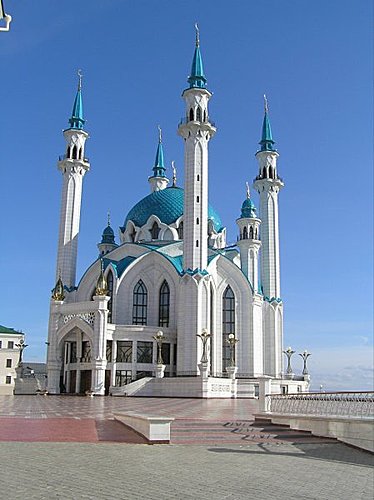
Photo
Panoramio
Kul
Sharif Mosque. In 1996 the mosque was rebuilt, its look is decisively
modern. Its inauguration on July 24, 2005 marked the beginning of
celebrations of the first millennium of Kazan.
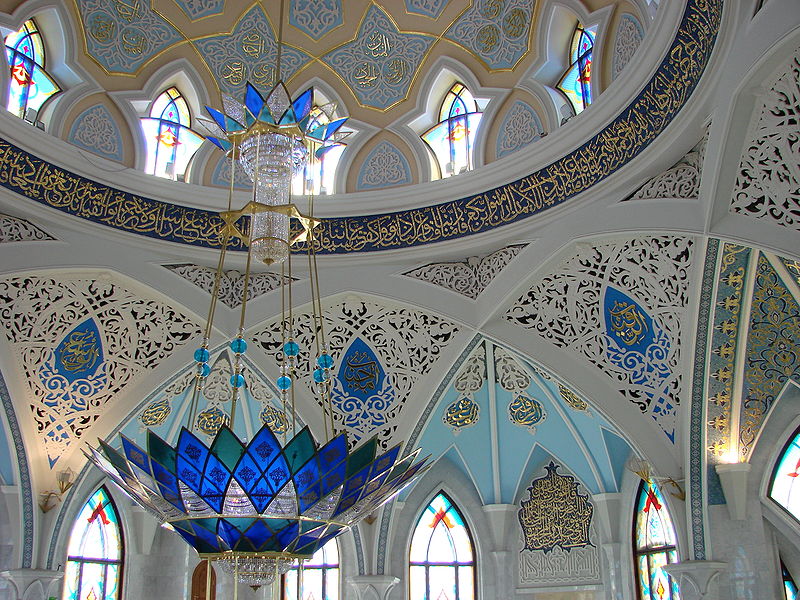
Photo Panoramio
Interior of the Kul Sharif Mosque, 1996
Astrakhan
Kreml Uspensky Cathedral
1698-1710
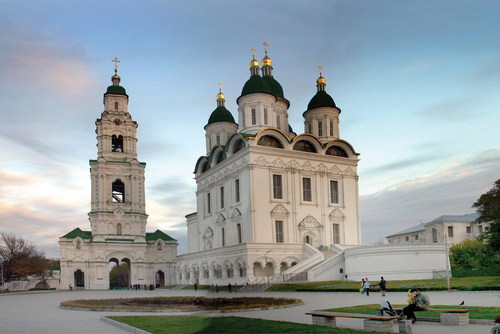
Photo
Panoramio
Ascension Cathedral 1698-1710
In the 13th and 14th centuries Astrakhan became one of the main trade and political centres of the Golden Horde. In 1395 the city was sacked by Timur. Astrakhan was rebuilt afterwards and became the capital of the Khanate of Astrakhan in 1459. In 1547 the city was seized by the Crimean Khan Sahib Giray. In 1556 Astrakhan was besieged and burned by Ivan the Terrible. The ruins of this medieval settlement were found by archaeologists 12 km upstream from the modern-day city. In 1556, the khanate was conquered by Ivan the Terrible, who had a new kremlin built on a steep hill overlooking the Volga. In the 17th century, the city became the Russian gate to the Orient. Many merchants from Armenia, Persia, India and Khiva settled in its downtown, giving it a multinational and variegated character.
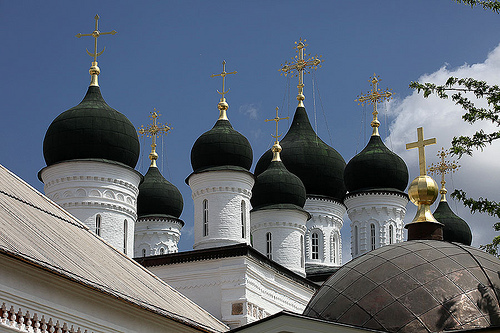
Photo
flickr.com
The Domes of the Astrakhan Kremlin